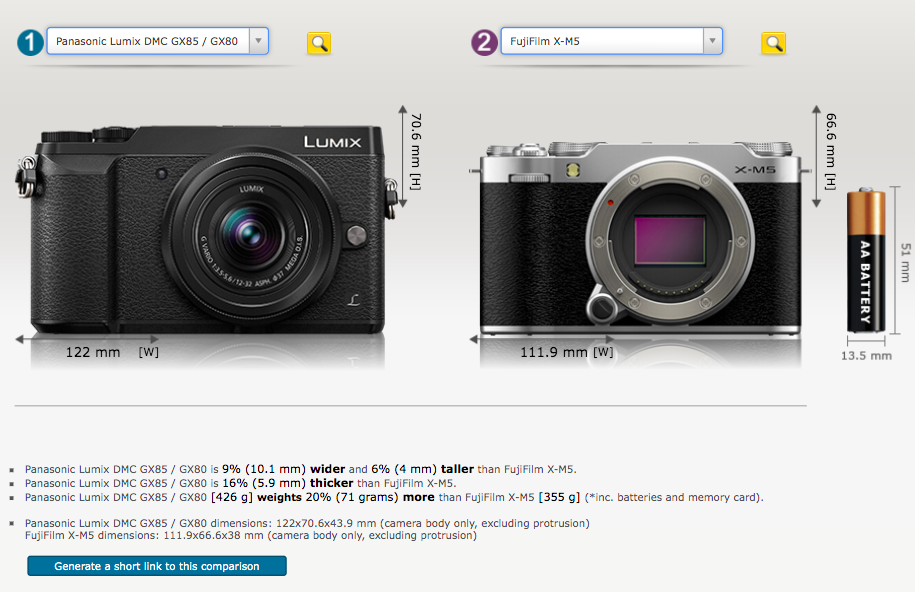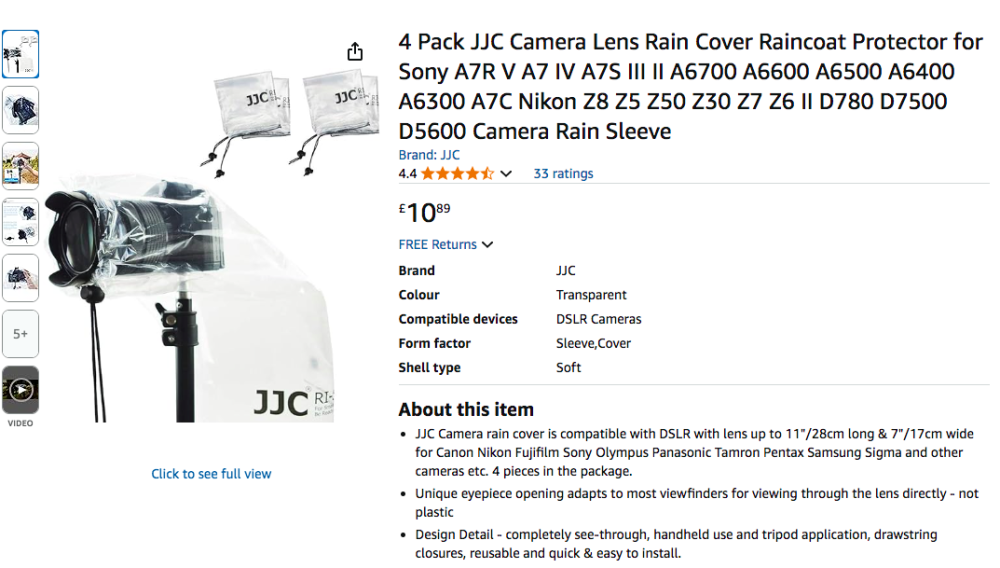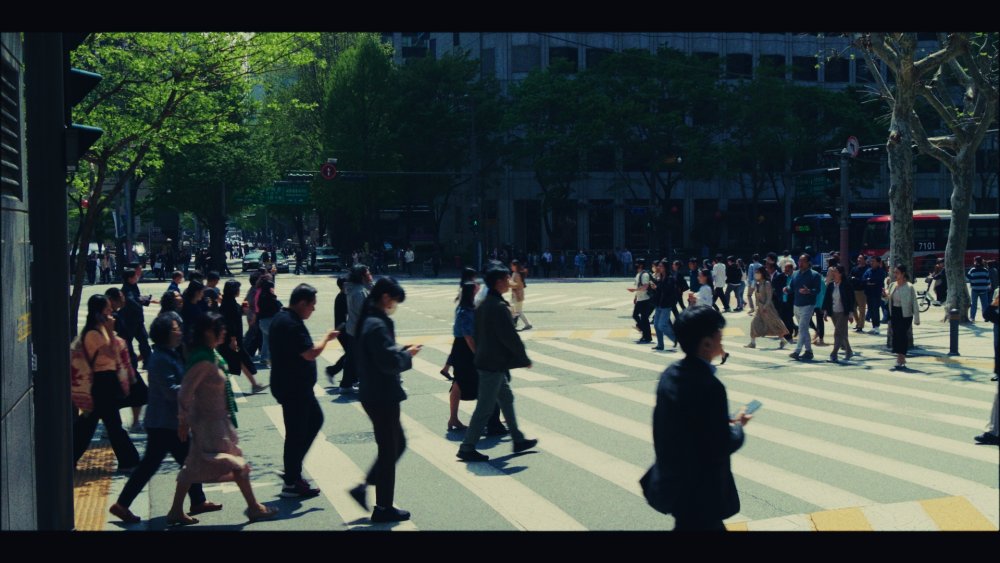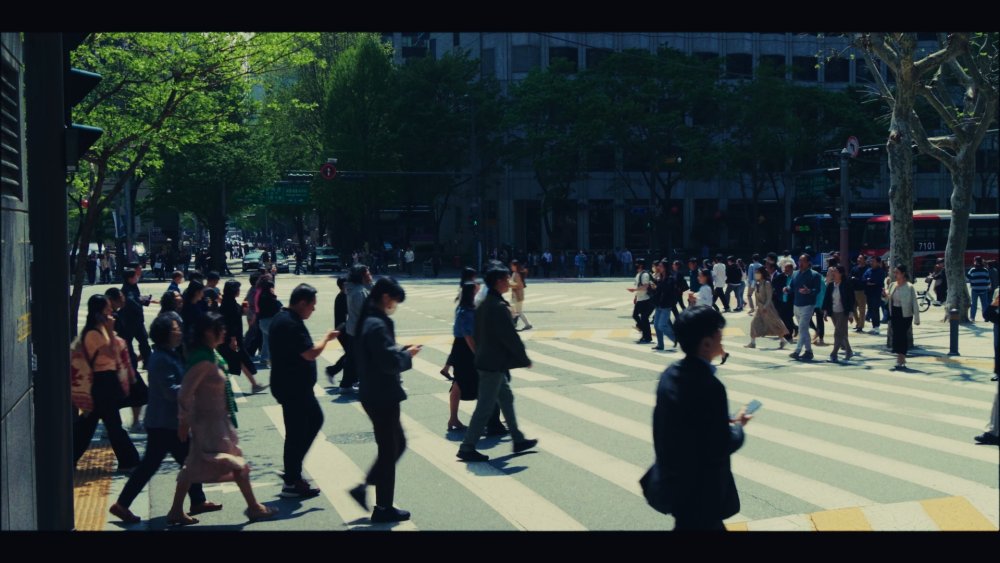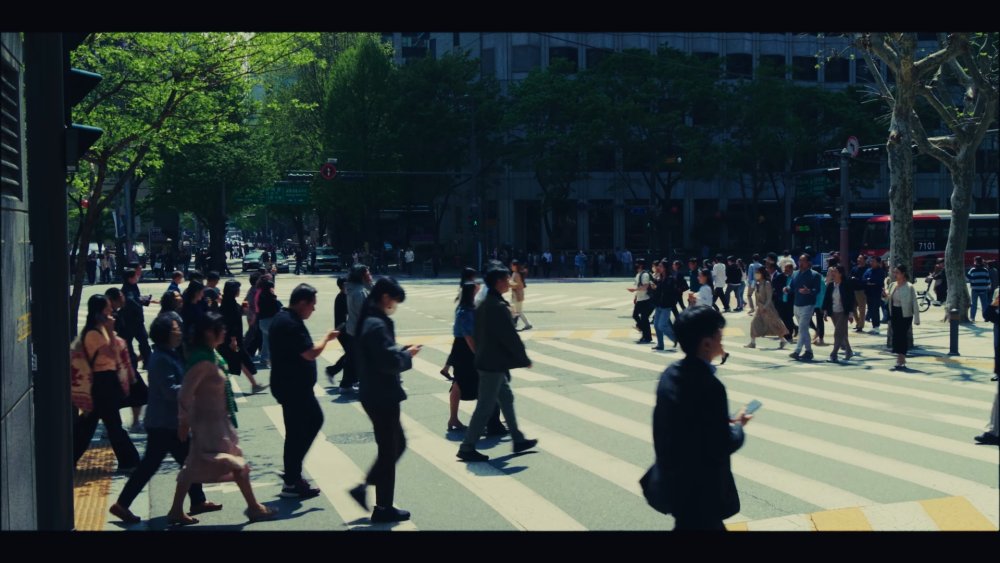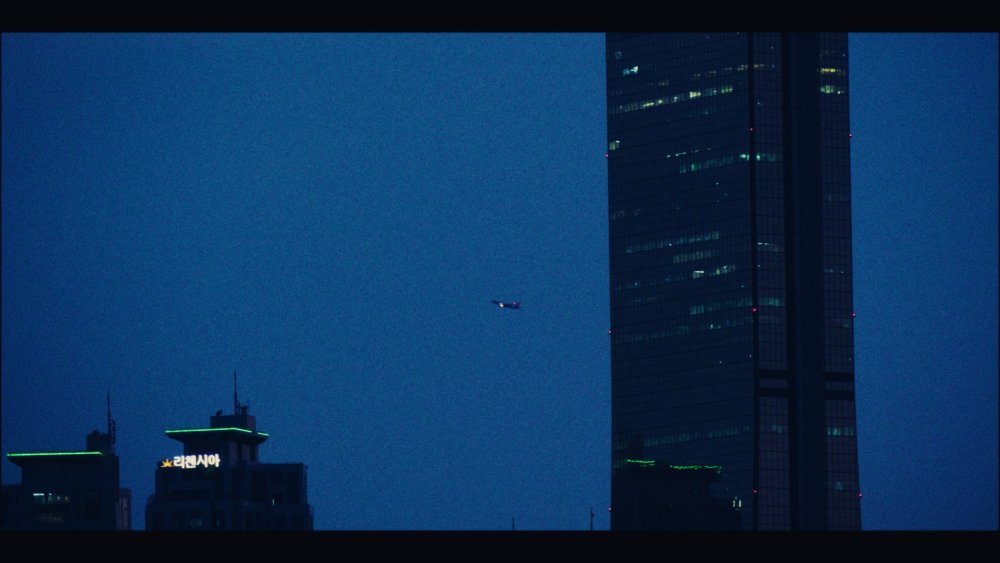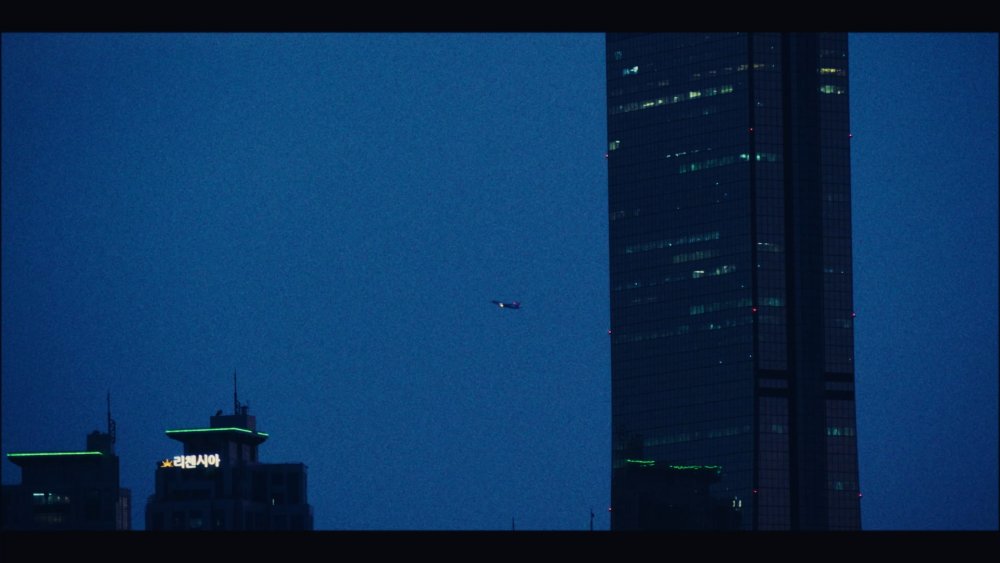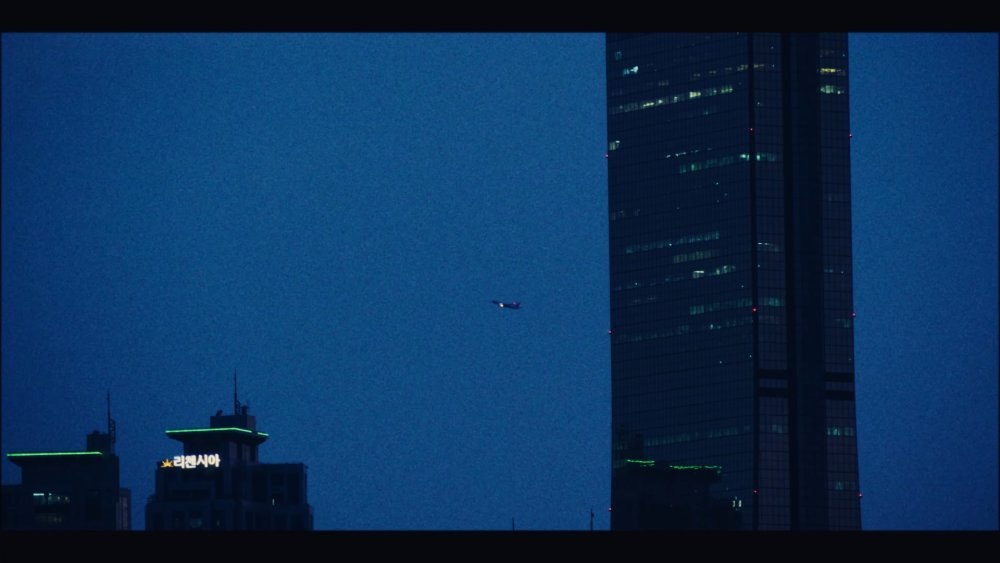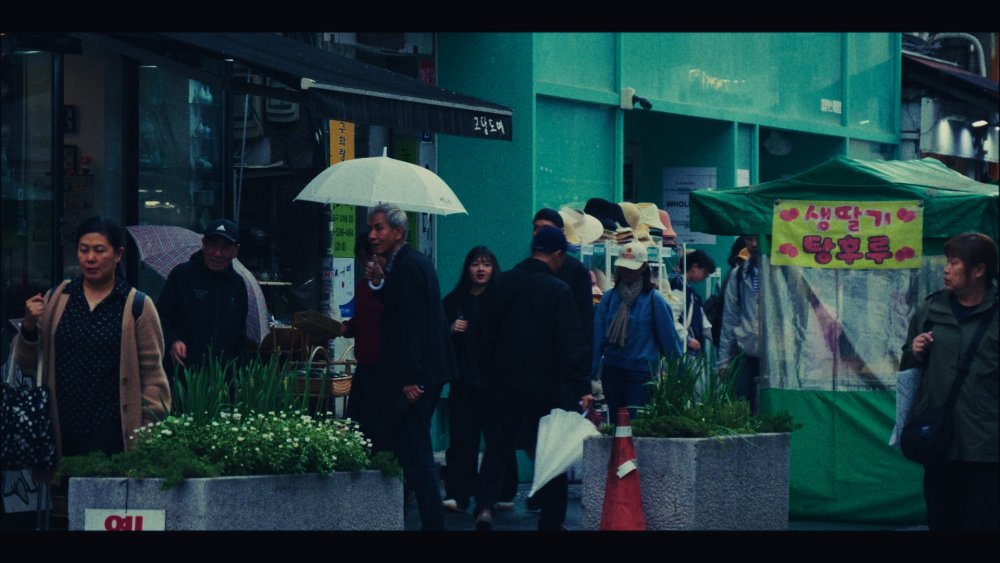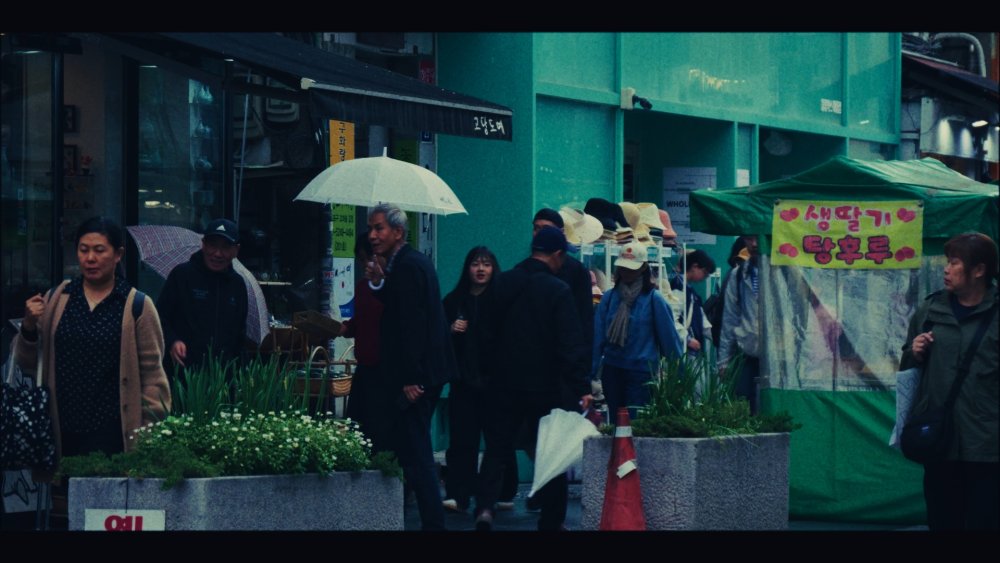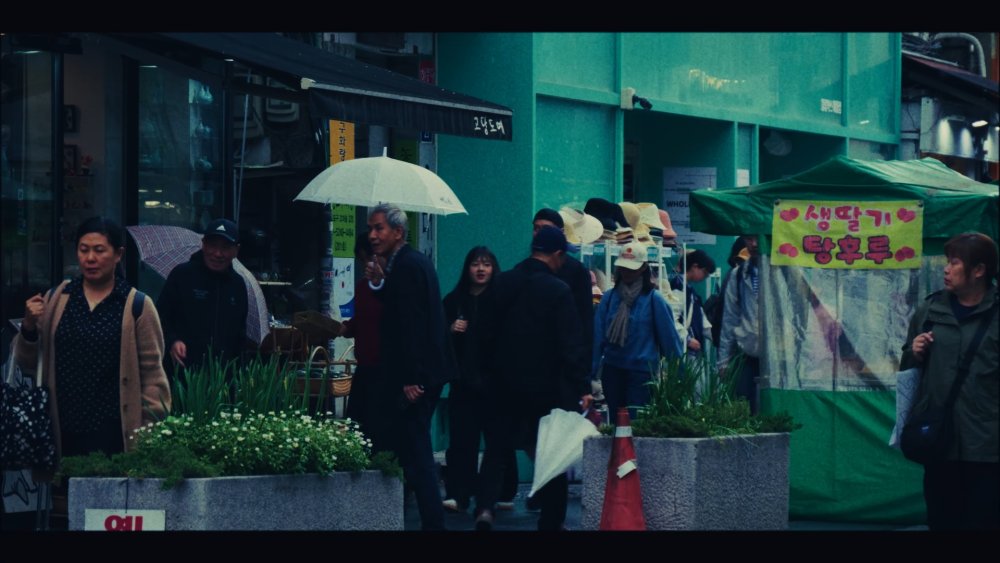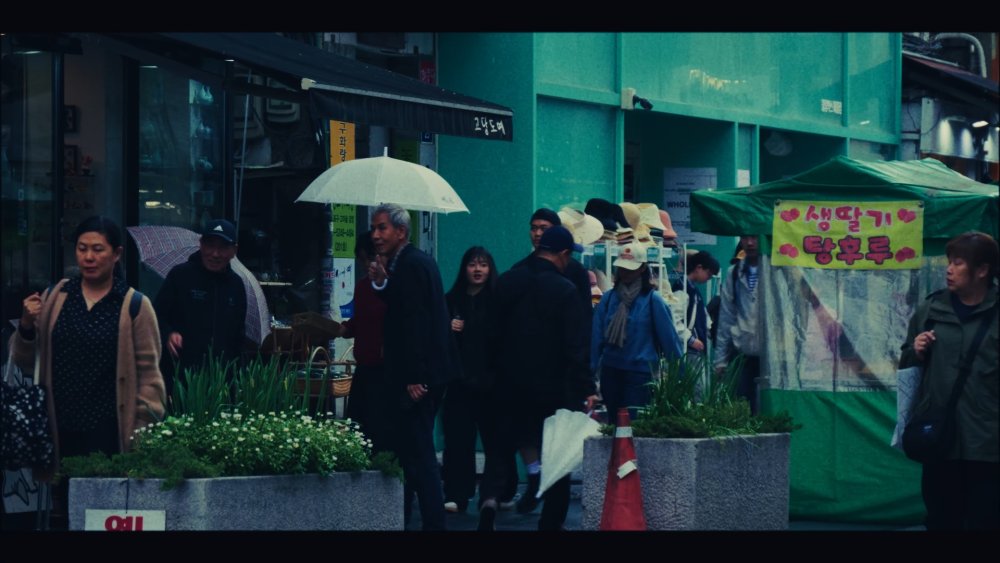All Activity
- Past hour
-
And now due to the overreach of the online safety bill in the UK, the government are determined that they will be in the room with us. With regard to the look, have you got anywhere local to you that has featured in a programme/film that you like ? Might be an idea to take a screen grab, put it on your phone as reference for framing and basic time of day and see if you can take some footage to get anywhere close to emulating it.
-
 BTM_Pix reacted to a post in a topic:
The Aesthetic (part 2)
BTM_Pix reacted to a post in a topic:
The Aesthetic (part 2)
- Today
-
Now we're getting into it! Terminology isn't our friend in these discussions, but it doesn't mean we can't make some headway. What I want to achieve is a look that I have only seen in moving images made for cinema and high-end moving images made for TV (e.g. GoT etc). I call this "cinematic" or "cinema" because everything I have ever seen in the cinema had this look (except for that one 3D movie I watched - yuck). What I don't want is something that looks different to what I've seen in the cinema. I call this "video" for want of a better word. I've seen plenty of things made for cinema / high-end TV and plenty of home video and in my perception there is a very clear distinction between them, and everything that doesn't look like cinema looks like video to me. My logic is that some things are required (you can't get the look without them) and others are deal-breakers (you can't get the look with them). So far my testing has shown that: 24p/25p are required, 30p/60p are deal-breakers 180-shutter, but acknowledging that this can vary if there's a reason for it (e.g. Saving Private Ryan) Harsh clipping is a deal-breaker Also, some things aren't absolutely required (because I've seen the look without them): Actors and dialogue aren't required because Koyaanisqatsi didn't have them and still had the look Artificial lighting or modifiers aren't required because I've seen examples were they weren't present (e.g. LINK) Anamorphic lenses Shallow DOF But, those aren't enough. So, some other things I think might be in the mix: Film or authentic film emulation isn't required because not all films have it (most do but not all), however all films either have film or a professional colourist who has done lots of stuff so there might be something they're doing that is required Black-levels are on my radar too. Camera shake / drift may be a deal-breaker despite being used for some parts of movies Widescreen. I suspect this isn't required, but maybe it helps. Not sure. Resolution probably doesn't matter unless it's above a certain threshold. Sharpness probably matters a lot as having too much breaks the illusion. Grain isn't required as modern films won't have any, but it might impact sharpness and it is probably required to manage banding in low-bitrate streams I've also seen people like Gawx pull off the look shooting the kinds of things I shoot, so I know it's possible. My challenge is that I can follow all the rules I have identified and it's still not enough, so I know there are other ingredients that matter than I haven't identified. Perhaps the biggest challenge is that we see the world differently. You say that filmmakers like Lynch or Soderbergh have used DV or even iPhones and still delivered pure cinema, but it just didn't look right to me. Maybe you're referencing something I haven't seen, but the things I have seen looked like smartphone videos, so I suspect it's a case of them either not having something that is required for me, or that they had something that's a deal-breaker for me (e.g. 30p). Unsane by Soderbergh looked absolutely terrible, Tangerine looked like it was shot on an early smartphone (because it was) and Behold by Ridley Scott looked absolutely terrible at 30p. Even when I slow it down to 24p (which gives it the advantage of being in slow motion) some shots still look like smartphone video, which is a type of video look that is a looooong way from looking like cinema. When I first started shooting video I couldn't tell the difference between 24p and 60p, now I can't stand 60p or 30p. When TV was introduced to Britain people looked at their tiny little B&W TV's and said "It's like they're here in the room with us". Maybe no-one else here is seeing what I am seeing, but it doesn't mean it doesn't exist and doesn't mean I don't want it and doesn't mean I don't know it when I see it. I don't really care about what "cinema" is, but there's a look that high-end productions consistently have that I am trying to achieve, and so far I haven't worked out what all the required pieces are.
-
 John Matthews reacted to a post in a topic:
Camera Choice: Cycle Touring Documentary?
John Matthews reacted to a post in a topic:
Camera Choice: Cycle Touring Documentary?
-
I also doubt that "weather resistant" is sufficient for the random deluges that are likely to happen over that duration of trip, although it's absolutely worth reading the manufacturers description of what "weather resistant" means, just so you know what they are thinking of when they use the phrase. It might be a lot more (or less) than what you might be thinking. This is something I have pondered for some time but haven't gotten around to. Better to just get something completely waterproof and be done with it. Then you can record in monsoon rains and get good footage of waist-deep water, which would be a highlight of the doco in itself. I would also suggest that the "bad weather low-light" situation isn't really that important. Realistically, if it's bad weather due to rain or due to dust at night then you can't see that much anyway. Just turn on your bike lights or headlamps and film the chaos. My setup doesn't cover the "long-zoom low-light" combination because it's not a thing that you need to shoot normally, and while it would be great to have, I have only ever wanted this combination for taking shots out of the hotel window at night in Seoul, and that's hardly a situation to design my whole setup around. I'm also surprised at how compact the 28-200mm lens is on the S9, it seems quite manageable.
-
 kye reacted to a post in a topic:
Camera Choice: Cycle Touring Documentary?
kye reacted to a post in a topic:
Camera Choice: Cycle Touring Documentary?
-
 kye reacted to a post in a topic:
Camera Choice: Cycle Touring Documentary?
kye reacted to a post in a topic:
Camera Choice: Cycle Touring Documentary?
-
 eatstoomuchjam reacted to a post in a topic:
Camera Choice: Cycle Touring Documentary?
eatstoomuchjam reacted to a post in a topic:
Camera Choice: Cycle Touring Documentary?
-
I'm going to revise my choice for this type of use. Camping and biking mean to me that one camera might not suffice if going Panasonic. I do not think that the OM-3 will give acceptable levels of noise inside a tent at night unless with a small light; nor do I believe the S9 by itself will give acceptable levels of weather resistance (by the way, I doubt the Panasonic 14-140 does either even though it's rated weather resistant). Therefore, I would still go for the S9 with a 18mm f/1.8 lens for dark, inside a tent scenes and the 28-200. For bad weather, I'd get an action cam. This will eliminate bad-weather low light; maybe pick up a camera cover for the S9. At MPB, that setup will set you back 2500 euros. The other option is the "do everything" set-up with the OM-3 with the Olympus 14-150 ii and the Panasonic 9mm for about the same amount of money, but you'll be spending more on the camera (double!) for less quality output (but still great). If you are a disciplined shooter that usually uses a tripod and manual focus, there are options that will cost way less. That OM-3 setup is about 950g and the S9 + action cam setup is 1300g. Note: Camera size doesn't have the Panasonic 18mm list, but it's the same size as the 24mm. Again, this is for 10-bit with great IBIS and AF being the priority. I'd go with a much cheaper setup if it were me. I wouldn't want to take that expensive of gear out into the unknown. It's a close call though. There are so many good choices. It almost makes you say "screw it" and just use whatever you have with its limitations. If you're a creative, this is usually better.
-
Indeed. These kind of productions seem to be as much about the presenter as they do the subject/location with every scene being, “here’s me on my epic adventure and here’s me talking to an impoverished local and here’s me deeply respectful at the local temple”. Ie, if it isn’t about you, you can skip all that shit. Some folks are famous because they are in front of the camera and others from being behind.
-
 John Matthews reacted to a post in a topic:
Camera Choice: Cycle Touring Documentary?
John Matthews reacted to a post in a topic:
Camera Choice: Cycle Touring Documentary?
-
 John Matthews reacted to a post in a topic:
Camera Choice: Cycle Touring Documentary?
John Matthews reacted to a post in a topic:
Camera Choice: Cycle Touring Documentary?
-
 John Matthews reacted to a post in a topic:
Camera Choice: Cycle Touring Documentary?
John Matthews reacted to a post in a topic:
Camera Choice: Cycle Touring Documentary?
- Yesterday
-
 ac6000cw reacted to a post in a topic:
The Aesthetic (part 2)
ac6000cw reacted to a post in a topic:
The Aesthetic (part 2)
-
 Davide DB reacted to a post in a topic:
The Aesthetic (part 2)
Davide DB reacted to a post in a topic:
The Aesthetic (part 2)
-
This is hilarious… and exactly true! 😂 The other option is to just put this upcoming project aside and join a Buddhist monastery… but I’m going to try to take one last run at this type of thing and see what kind of ‘happiness’ it leads to. Lets see…
-
@Tulpa If you are buying from scratch and don't have a lot of lenses etc in a particular format that you want/need to use then I'd be looking at this camera too. It is smaller and lighter than even the very compact GX-80/85. Compared to the bigger MFT offerings in the G and GH series then it is even more of a stark difference in form factor but it is also dramatically cheaper. Video specs, it shoots 4:2:2 10-Bit and has the open gate mode which for this sort of expedition might well be beneficial to you as you can more easily reformat the footage in different aspect ratios for social media etc. It has the colour profiles for ease of use but it also shoots in both flavours of F-Log so you can roll your own look. Lens wise, it has not only got a huge back catalogue of native lenses (a lot of which have stabilisation) and are plentiful on the used market but it also has a lot of fast compact 3rd party lenses like Viltrox which are available at the sort of prices we all remember MFT lenses being back in the day ! Obviously, it has the larger sensor too.... The "downsides" would be considered to be the lack of IBIS and having what appears to be a vague degree of weather resistance - I couldn't find any definitive answers on that one. The lack of IBIS may well actually prove to be a blessing in disguise if the camera is going to spend any amount of time on the handlebars while you traverse over what for large chunks of the journey will be less than smooth surfaces. Wear and tear over three years will be bad enough without throwing the fragile mechanisms into the mix. There is a reason why shows such as Top Gear went with the IBIS-less GH5s (although I'm not sure if the story of show wanting to use the GH5 minus it was actually the trigger for Panasonic to make that version is apocryphal or not). Whatever way you go, I'd spend some research time on the best shock mounting options as it will be a point of failure for any camera that you go with over that period of time. As for the weather sealing... Back in the dark distant past when I was a professional sports photographer using battleships like the D3/D4/D5 etc they could take a hammering but as soon as the rain/sleet/snow became a bit too much none of us were taking that chance that they were immune to it so out would come the covers for both the bodies and the lenses. Think Tank make good ones but they are all designed for bigger cameras rather than the X-M5 so on a more prosaic level, these are cheap and cheerful at less than £11 for a pack of four and won't take up much space. On a trip like this when you are likely going to encounter very real weather, I wouldn't take any chances with the weather sealing rating vague or otherwise of smaller cameras.
-
Wow folks, this is exactly the kind of extra insights and support I was hoping for here. Thank you so much and hats off to all of you! Really 🙂 It's clear that some of you @kyereally understand the actual logistics of trying to pull something like this off while maintaining focus on the basics. @John Matthews Big thank you for getting right to the heart of which bodies and lens choices you would employ, this says a lot! @MrSMW for questioning those choices. And of course eatstoomuchjam for helping to get this party started. Clark, Tbonne and IIka for your insights as well. I need a little time to go through the various camera bodies and lens combinations now and respond further, but please feel free to add anything extra if you feel that it will benefit. I'm super grateful for anything you guys can add beyond what has already been started. With the logistics of the bicycle, bicycle equipment, route and camera/ laptop and actual story, you can see that this is a lot of balls in the air... so another huge thanks for your wise insights here folks! 🙏
-
I wouldn’t and I think it’s a great bit of kit. But no weather sealing to speak of and it’s build I’d say is OK, but it’s not built like an OM-1. Or even close, that thing is built like a tank. Despite being a full-frame guy for photo and video, bike packing around the world, M4/3 for sure. I can’t see past Olympus/OM Systems for this kind of thing.
-
The S9 isn't weather sealed, though, is it? It's not the only consideration, but I'd definitely consider that a "would be nice" for a multi-year bike tour which will probably include a lot of camping.
-
Here's one of the issues with M43: Granted, the OM-3 is quite possibly a more functional setup with a better build, but the S9 could be all you need and will beat the OM-3 in price, low-light, and video output. Personally, I'd rather go with the S9 even though I've bad-mouthed it quite a bit.
-
An OM-3 with a 14-140mm and a small M43 prime barely takes up any space. An action camera barely takes up any space. A phone is probably coming anyway. That's a primary camera and two backup cameras. For lights, if they're needed at all for the style of documentary being done, a small pop-up reflector weighs almost nothing and can do a lot. Combine that with one or two Aputure MC's and maybe an ultra-portable light stand and you've got a workable lighting setup. Don't want the reflector? Include a white t-shirt or hoodie in the package and use it as a bounce. It'll look ridiculous on set, but I've made it work with worse. The MC's are also nice because they have a magnet built-in so with some creativity, you can find a place to put them without necessarily needing a light stand (if it were me, I'd bring at least one small one, though. For mics, a DJI mic 2 kit and one of the tiny Deity or R0de on-camera shotguns? The Mic will pair with an Action 4 and can also record internally. Total weight of that entire kit? <2kg Not bad for a setup that can record fantastic-looking video (in the right hands) and capture acceptable audio! Need a tripod? If it were me, I'd skip a traditional tripod and go with something like a Cobra 3 monopod with the little "tripod" that folds out at the bottom and a foot pedal to unlock the top. With such a small and light camera, it'd be stable enough (I'd set a bag on the feet on a windy day) and with a fluid head or ball head on top, you can also fake a slider, a dolly, and to some extent, a steadicam. That's another 1kg or so. Don't want to offload media using the phone (this is doable with a modern iPhone and a USB-C hub these days) or want to edit on the go? Add an M4 Macbook Air which adds just about 1kg more. It'll be plenty for just about any editing OM3/action camera/phone video. The rest of the stuff mentioned that's needed (sleeping bags, etc) is all a sunk cost in terms of weight for a long biking trip.
-
Totally get the love for the “celluloid look”: 24p, grain, soft image, widescreen bars. It hits a vibe. But these are aesthetic codes we’ve absorbed over time, not fixed rules. They signal “cinema” because of decades of conditioning, but it’s just one visual language. Some of the most “video” looking content was shot on film. Sitcoms like Friends or Seinfeld used 35mm, but lit and cut for TV brightness and fluidity. Meanwhile, filmmakers like Lynch or Soderbergh have used DV or even iPhones and still delivered pure cinema. It’s not about format alone, but how it’s used. Same with frame rates. 24p stuck around because of early sound sync limitations, and we grew to love its motion blur and softness. 60p feels more “real,” which works for news or sports, but often feels uncanny in narrative. The Hobbit in 48p was a bold move, but many rejected it because it broke the cinematic illusion we’ve grown used to. New generations are wired differently. They grow up on 30p iPhone clips, 60p YouTube, 120Hz TikToks. What feels “cinematic” is shifting. Same with aspect ratios: 4:3, widescreen, vertical. Even black bars have become a kind of shorthand that says, “this is a movie.” Resolution plays a role too. Some DPs shoot in 8K then soften or downscale to avoid the overly digital crispness. Others embrace every pixel. You’ve got people using 35mm, 65mm, anamorphic, spherical, vintage lenses, weird sensors. There’s no single “cinematic” look. Just choices.
-
It's more work but can be done. This guy cycled from China back to England and shot video along the way. Quite an adventure. https://www.instagram.com/joshreids/ Now, he would be someone to ask for advice from.
-
If I understood correctly, the OP plans on being several years on the road on a bike around the world, so any equipment or other items needed during that period of time would presumably need to be carried on the bike, unless there is a support crew. Those videography-related items may sound like they are small and lightweight but after everything else that one needs in a life on the road to survive several years in different countries, I believe most people would agree there is no space for anything absolutely not needed. Are we talking about a bicycle, or a motorcycle? I assumed bicycle.
-
Stay of execution for the S9… A. Trade value is trash and I refuse to take that kind of hit, providing… B. I can get some use out of it and soI am going to repurpose it as; spare/backup body/lens (with the Sigma 28-70 which I was keeping as a back up lens anyway) dedicated slow mo unit for such times I need such a thing which is every job, but less than 5% of any job. Ditto ‘gimbal-like’ duty. Potential 3rd angle that I recently decided was overkill to have a camera full-time dedicated to. So occasional roles I could have covered mostly, but may as well use the S9 for. So not quite down to 3 cameras from what was 5 just a few weeks back, but I’ll call it 3.5!
-
I guess it all depends on what you're aiming for @tulpa Something like Harmen Hoeks Silent Hiking is beautiful but like @kye hints at a lot of work Another option is the action cam style of Itchy Boots. Maybe a combination of both. But I would really look into small pocketable options that are easy to get in and out quickly. And for sure consider one of the very small drones as Kye suggested
-
I can, especially as a one man band photographer filmmaker/videographer who always works solo. I currently use 2x photo dedicated cameras, 2x video, 1x monopod, 2x tripods, 2x lightstands, 2x lights, up to 6 pieces of audio gear, 1x drone, multiple camera angles at the same time, photo and video at the same time... There are parts of every job where I use every single one of the above at the same time except 2x photo cameras. I can have 3 video units rolling, with an audio feed to each, shooting stills with the drone up shooting video straight down statically. OK, with the drone, it's a frikkin nightmare doing that and last time out I crashed it into a tree landing it 200 metres away...but it can be done. And that's with single attempt no second chance scenarios. Now carry all that on a bike plus all the other gear? Obviously not, but a single robust dedicated camera and either 1 or 2 max lenses, carbon travel tripod, super-lightweight collapsible lightstand and small LED plus audio gear takes up near zero space and battery life is excellent. Tiny compliant drone. Yes, I can see one person handling this just fine, especially if you are taking your time. I think all of us to a degree can overthink these things and volume of kit creeps up. I'm on a reduction mission myself right now in this regard having allowed my own volume of gear to creep up. I had a kit rationale recently and asked myself, "do you really need 6 lights and when have you ever used 6?" Err, never. Do I really need that 3rd camera angle for video or is it just overkill and one more thing that actually risks screwing the entire scenario up because you are now juggling too many pieces of kit that all need to be focused, or not focused and rely on AF and is the transmitter for the audio switched on and is the receiver also and... Sometimes, often even, less can end up being more.
-
I can't imagine this working out without traveling as a pair or a group who take on different responsibilities (such as riding ahead and placing the camera for a shot, in case it's a static position), the amount of gear needed for interviews could also be problematic for a single biker. Camera, backup camera, microphones, lighting, tripod, stands for the lights, storage, laptop, sets of clothing for different weather conditions and spares in case cleaning on the road is not possible, camping gear, sleeping bag, tent, food, drink, tools for repairing the bike and the cameras, etc. I just can't imagine this amount of gear (considering the timespan of years) to be feasible to take when biking long distances etc. If a group of 2-3 bikers go and are all trained to use the equipment, then it could work. Stuff is going to break, what are the contingency plans, how is repair accomplished etc.
-
Yesterday I played around with FLC and grading some clips from Korea and the GH7 and 14-140mm. I plan to do a range of tests around settings for softening / sharpening / adding grain / other texture treatments in post, but YT compression is pretty diabolical so I'll need to do quite a number of upload tests to see what settings in Resolve get you what result on YT. I also went much bolder with the colours too, thinking of Gawx. This was a first attempt just to work out the ballpark of where to start. Probably the immediate takeaway is how the grain is quite different per shot, despite it being applied evenly to all shots. Here is a comparison between the timeline in Resolve, the 42Mbps h264 4K export, and the 12.6Mbps h265 4K YT download. Shot 1 - Resolve: Shot 1 - Export: Shot 1 - YT stream: Shot 2 - Resolve: Shot 2 - Export: Shot 2 - YT stream: Shot 3 - Resolve: Shot 3 - Export: Shot 3 - YT stream: Impressions: I'm told that film grain is most noticeable in the mids and shadows, so the distribution is consistent with film, which partly explains why the first image has less noticeable grain as most of the image is quite bright or quite dark. The sky shot seems to have lots of grain as it's a flat surface in the right luma range, but it seems that more grain is retained on the YT stream because there is less movement in the frame for the compression to cover. Whereas on the street scene the grain is considerably reduced despite having similar darker flat surfaces. I didn't apply any softening to this video, so the sharpness is direct from the 14-140mm -> GH7 5.7K to C4K downsample -> C4K 500Mbps Prores 422 -> 1080p timeline image path. The 14-140mm isn't tack sharp but it's not too bad. I've noticed in the past that grain can make images look sharper than they really are, but in this example the grain combined with the compression probably softens detail as a net result. I will definitely be exploring this relationship more. Film is known to have a sharpness of >1 at its maxima, so having some sharpening applied seems appropriate. Overall it seems to do a pretty good job capturing the grain, here's the next frame from the YT download so you can compare what is grain and what is detail and texture in the scene.
- Last week
-
OK, decision made, flipping the S9 and an S5ii plus a lens, for a second S1RII, - it's worth it to me. 4 bodies down to 3 from what was 5 at the start of the year. 9 lenses down to 6, down to 5. I'm hoping to get that down to 3 at some point in the near future... 3 camera brands down to 1 (already happened)...but need more batteries because this S1RII is a power hog. I'm one of those that normally scoffs at folks reporting crap battery life and can normally exceed the official numbers by a factor of around 3, but with the S1RII, only by about 1.5. I now have 12 batteries and have 2 on charge at all times and as soon as Llano have the Lumix battery charger with built in power bank available, will have one of those in my bag. But the power issue aside, I think it's a bit of a no-brainer to me and really it comes down to one single factor more than anything, - e:shutter, - I hate it (for stills) and am going back to mech shutter only. The Sigma 28-45mm f1.8 is great by the way. Not quite as big or heavy as I expected, or at least no larger or heavier than expected, fast, very well built and no frikkin' extending zoom!! I'm just hoping they make a longer focal length version and then I really would be set for the remainder of my career.
-
Great info from John and definitely agree on the zoom + fast prime combo. I have the 14-140mm and love it. I was tossing up between it and the 12-60mm F2.8-4.0 because I wasn't sure how often I'd use the 60-140mm part of the lens, but since getting it I was really surprised at how often it really comes in handy. Essentially, it means you can shoot whatever you can see, which really helps when you're trying to give a sense of a place. It's slower than the 12-60mm but neither is a low-light lens and the DOF differences aren't relevant in a doco situation. Here's a video I did showing the stabilisation, but it should show you the versatility of the lens. I shoot travel videos and have found that AF zooms best allow you to document the places and experience you're in, as they support the approach I've developed to shooting: Shoot a good variety of shots so you have lots of options in the edit Shoot the wide so you have an establishing shot, shoot the people, shoot the buildings, shoot the motion, shoot the colour Shoot the space (especially if it's large), shoot the details, look down at the ground and look up at the buildings / trees and the sky Think about what makes this place special and shoot that Think about what makes this place feel the way it does and shoot that In general, the faster you can shoot the more you will capture and the more authentic it will be because it will be more spontaneous and more based around your initial impressions rather than shooting slowly and having too much time to think about it. Plus, sometimes things happen very quickly and often they're the most important things to capture. I'd also second @tbonnes idea of combining the action cam and mirrorless. The action cam can be mounted on the bike ready to grab footage at a moments notice and doesn't need to be put away even in torrential rain or a dust storm. Then, once you've stopped you can pull out the mirrorless and get some shots. If you're a masochist then you can even go ahead, setup the mirrorless and hit record, go back again and ride through the frame, then go back and retrieve the camera. It seems like a great way to shoot a film and a spectacular way to remove as much pleasure from the experience as possible. This raises the other option - a drone. It's the fastest way to get shots of you without having to ride the same section of road three times. The laws for flying drones seem to have stabilised in a lot of places allowing drones under a certain weight, but it's something that would require an incredible amount of research beforehand to make sure it wouldn't get confiscated or get you into hot water just for having it.
-
@Tulpa sound like a cool project. Haven't done anything like it but have brought a bunch of different cameras on training rides filming my wife (a mountainbike pro) for the last decade. I would strongly consider a combination of an action cam and a mirrorless. The Osmo Action paired with their mic mini is a brilliant combo. The camera alone can be used in a bunch of conditions without risk (rain etc.) I have no experience with M 4/3 but used to bring a Samsung NX500 in my back pocket. It was brilliant at that. Has now been replaced with a Fuji X-M5. Same size.
-
10-bit and weather sealing. There's the rub. Panasonic: GH5, GH5 ii, GH5S, G9, G9ii, GH6, GH7 Olympus: OM-1, OM-1ii, OM-3 Anything smaller, you'll need to forgo 10-bit. For lenses, there are many options from flagship zooms (all are great, new and old) to small primes. However with the latter, there aren't necessarily that many that are weather-sealed. Panasonic: All the new versions of the Leica-branded primes, minus the Leica 15mm f/1.7 Olympus: All the Pro versions and the new versions of the 17mm and 25mm f/1.8. For run and gun in 2025 (AF in video), I'd choose the G9ii (lighter) or the GH7. For lenses, I'd go with two- one all-purpose, do everything lens like the 14-150 (Olympus), 14-140 (Panasonic), or 12-100 (Olympus, heavy!). After, I'd go for the Leica 25mm prime (new version) if weather-sealing is necessary; if not, the old version of the Leica 15mm f/1.7, Olympus 17mm f/1.8 or Panasonic 25mm f/1.7. If 10-bit isn't the issue, I'd go for the smallest camera with the best output. I'd go go a GX85 and an audio recorder, the E-M5 iii, OM5, OM5ii (all of these have decent audio and AF). It's sad that Panasonic cannot offer us anything under 500g with 10-bit, decent audio, and decent IBIS in MFT. For that, they can only offer the S9 in FF with NO pancake lenses- a CRAZY situation that is costing them dearly every single day!
-
Olympus/OM System OM-1 + 12-35mm f2.8






